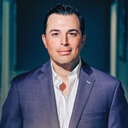Posted underRhinoplasty q&a
Why Do So Many Tips Develop Pointy, Small-ish, Hardened Balls After Rhinoplasty?
Is this due to poor technique and an over abundance of mediocre plastic surgeons? Is it the normal outcome of grafting? Thank you.
Answers (6)
From board-certified doctors and trusted medical professionals
Dr. Michael A. Persky, MD

Dr. Michael A. Persky, MD
Facial Plastic Surgeon
Answer
Dr. Anthony Corrado, DO

Dr. Anthony Corrado, DO
Board Certified Facial Plastic Surgeon
Answer
Dr. Kenneth Hughes, MD

Dr. Kenneth Hughes, MD
Board Certified Plastic Surgeon
Answer
Dr. William Portuese, MD
Dr. William Portuese, MD
Board Certified Facial Plastic Surgeon
Answer
Dr. Jeffrey Zwiren, MD
Dr. Jeffrey Zwiren, MD
Board Certified Plastic Surgeon
Answer
Dr. Richard W. Fleming, MD (retired)
Dr. Richard W. Fleming, MD (retired)
Board Certified Facial Plastic Surgeon
Answer
More Rhinoplasty Questions
See all Rhinoplasty Q&AWE SEND PRETTY
EMAILS
What’s trending? Who’s turning heads? Which TikTok myths need busting? We’ve got you. No fluff, no gatekeeping—just real talk. Get our free, unfiltered newsletter.